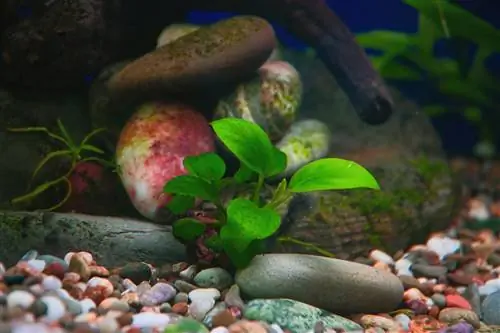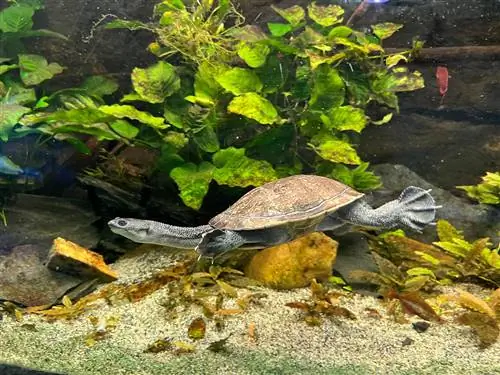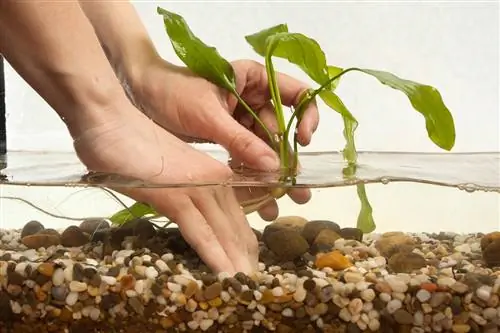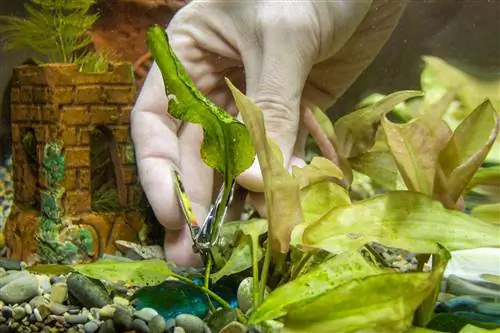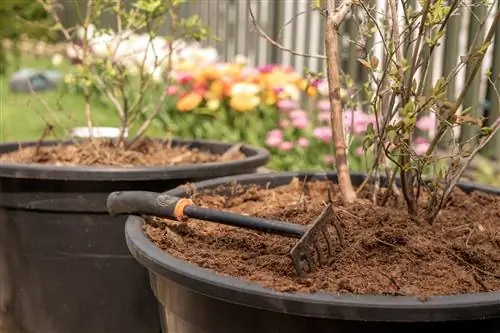- Author admin [email protected].
- Public 2023-12-16 16:46.
- Last modified 2025-01-23 11:22.
If aquarium plants don't grow as quickly as the owner of the aquarium would like, the fertilizer is quickly brought out or a lot of co2 is pumped into the water. This can be the solution if there is a nutrient deficiency. But there are also other brakes on growth.
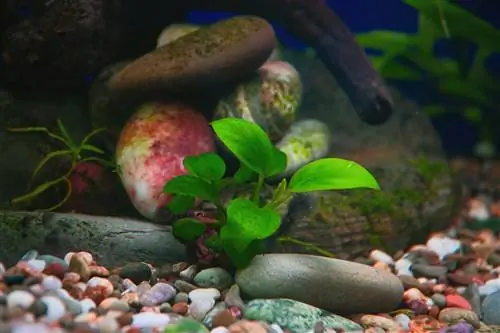
Why don't aquarium plants grow and how can I change that?
The most common causes of poor or no growth of aquarium plants areLack of co2, nutrients and lightCheck and optimize the fertilization and, if necessary, introduce additional CO2 into the water. Improve the lighting conditions by using lamps or rearranging the aquarium.
What do aquarium plants need for good growth?
In order for every aquarium plant to grow he althily and lushly, it must always have sufficientmacro and micronutrientsavailable to it. In addition, as muchlightmust penetrate each variety as it needs. A sufficientco2 concentration in the water is also a crucial growth factor.
How do I fertilize the aquarium plants sufficiently?
Each plant variety has its ownindividual nutrient needs that need to be taken into account when fertilizing. Some examples of optimal nutrient concentration per liter:
- Iron: 0.05 to 0.1 mg
- Potassium: 5 to 10 mg
- Magnesium: at least 5 to 10 mg
- Phosphate: 0.1 to 1 mg
- Nitrogen: 10 to 25 mg
Don't wait until your aquarium plants show signs of deficiency. Instead, you can check the water values regularly with tests (€7.00 on Amazon) and keep the values in the optimal range with a suitable complete fertilizer or special fertilizer, such as iron fertilizer.
How do I increase the co2 concentration in the water?
Higher stocking increases the co2 concentration in the water, but the effect is minimal and will rarely be enough to make plants grow vigorously again. You have to add additional co2 to the water via aco2 system. Co2 can also be produced withcitric acid and baking sodaaccording to the instructions. Likewise, aliquid carbon fertilizer, which is recommended for algae control, can also increase the co2 content. If you want to save yourself the effort, use plants that require little co2.
How can I fully meet the light requirements of aquarium plants?
Aquarium plants also prefer natural light. Therefore, try to find abright location, but without direct sun. If there is not enough daylight, installadditional lamps or increase the lighting time. However, the newly fueled growth must be accompanied by increased fertilization. For some plants, it may help to thin them out or move them to a new, better-lit spot. Such transformations are more effortless if you plant plants in pots.
How can I support the growth of my aquarium plants?
With these measures you will contribute to he althy plant growth in the aquarium:
- Avoid fine-grained substrate (poor root anchoring)
- provide enough space for each plant
- Comply with planting recommendations (foreground or background)
- ensure a fixed day-night rhythm with lighting
- Renew lighting regularly (maintain light spectrum)
- don't constantly cut the tips (new growth takes energy)
- Avoid over-fertilization
Tip
Honey shoots are a sign of lack of light
When plants need more light, they grow taller in search of it. But the newly gained length is not accompanied by leaf growth. If your plants rot, provide better lighting as soon as possible.

